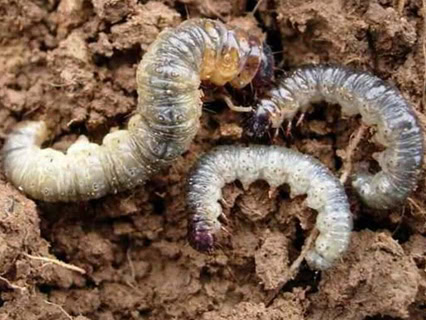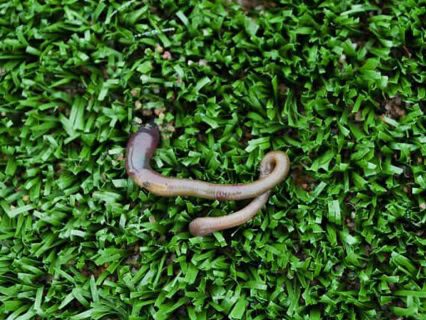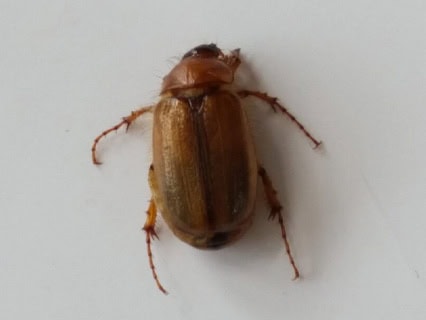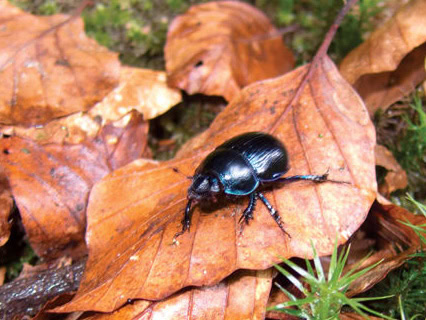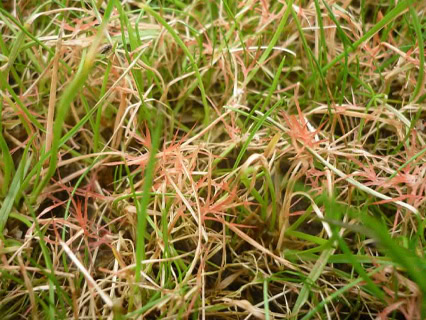
Red Thread
Seen for its obvious red colour, Red Thread can be very prevalent in lawns these days. It can take hold especially over winter when fertility gets low and it is continually wet. Whilst it looks bad, it doesn’t generally kill the grass. Spraying a fungicide and applying fertiliser will get this under control.
You may need to spray the fungi 2 to 3 times to achieve total control. The best control measure is to maintain a good supply of nitrogen in the turf to promote growth. This enables the disease to be mowed out. A fertiliser containing some potassium is best as this will harden up the plant and help protect it from the elements of hot summers and cold winters. The spraying of fungicides only gains a short-term result, it aids in the grass building up its own resistance to the disease and you will get locked into an annual cycle of treatments.
Personally, I prefer to combat Red Thread with good lawncare practices and a well-managed fertiliser programme and good water management to reduce the affects. Once conditions improve the lawn will recover with no lasting damage. Remove clippings when mowing. If you water, water deeply and infrequently and only if conditions start to dry. Anything you can do to improve drying will help e.g. reduce shade, improve air flow
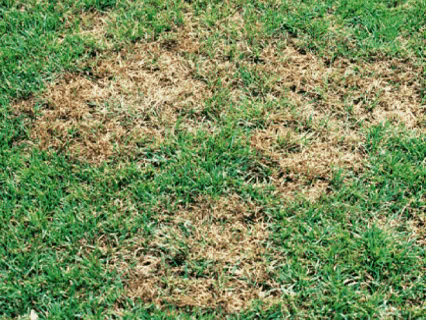
Rhizoctonia Brown Patch
Brown Patch is a fungal disease affecting the roots of lawn grasses causing small discoloured patches that grow to large patches of dead grass up to 1 metre. When looking at the grass roots they will be turning black. Favourable conditions for its occurrence are warm humid weather patterns, particularly when soils are poorly drained, and the lawn is heavily thatched.
You can minimise the chances for a brown patch with a good lawn care regimen by not over fertilising, watering early morning so the grass can dry out fully before nightfall, aerate and dethatch the lawn annually and applying fungicide where appropriate.
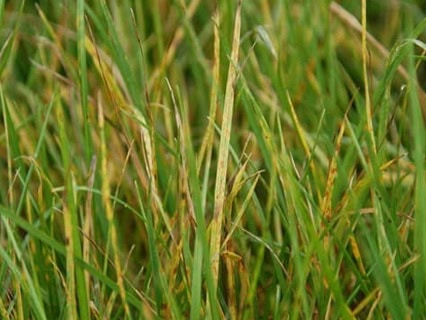
Crown Rust (Ryegrass)
Crown Rust is caused by a fungus, mainly in warm, moist conditions from early summer to late autumn. The affected turf appears rust coloured due to the production of numerous yellow or orange spores on the leaf. Applying a fertiliser and watering it into the lawn and mowing frequently should help in eradicating the disease.
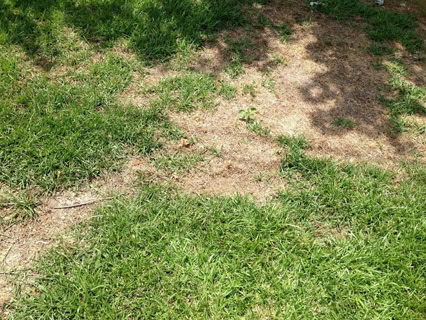
Dollar Spot
Dollar Spot is a lawn disease that affects a wide range of turf grasses throughout most of the year. It is easy to identify but it’s a disease that is easier to prevent than fight the disease. Dollar Spot looks like light tan roughly 3-8 cm circular patches on your lawn.
As the lawn disease progresses, the patches can bleed into each other to form large, irregular discoloured spots. Dollar Spot thrives in conditions of dry soils and moist air and in lawns that are low fertility and densely thatched. To prevent Dollar Spot water your lawn deeply, but infrequently.
Fertilise in late Spring. If your lawn does develop Dollar Spot a fungicide with a fertiliser application will repair the lawn.
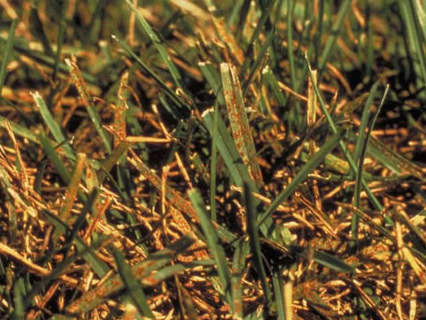
Rust
Rust is a fungal disease that occurs on grasses when their growth is slow.
You will know if you have rust disease as grass blades are coated in an orange red to yellow/brown dust or spores that resembles rust. You will be able to rub the dust off with your fingers and affected patches of lawn will generally become thin and weak.
Rust usually happens in Summer or late Autumn, during periods of dry weather or when the grass lacks nitrogen. It is easy to remedy by fertilising the lawn and a change in weather can help.
